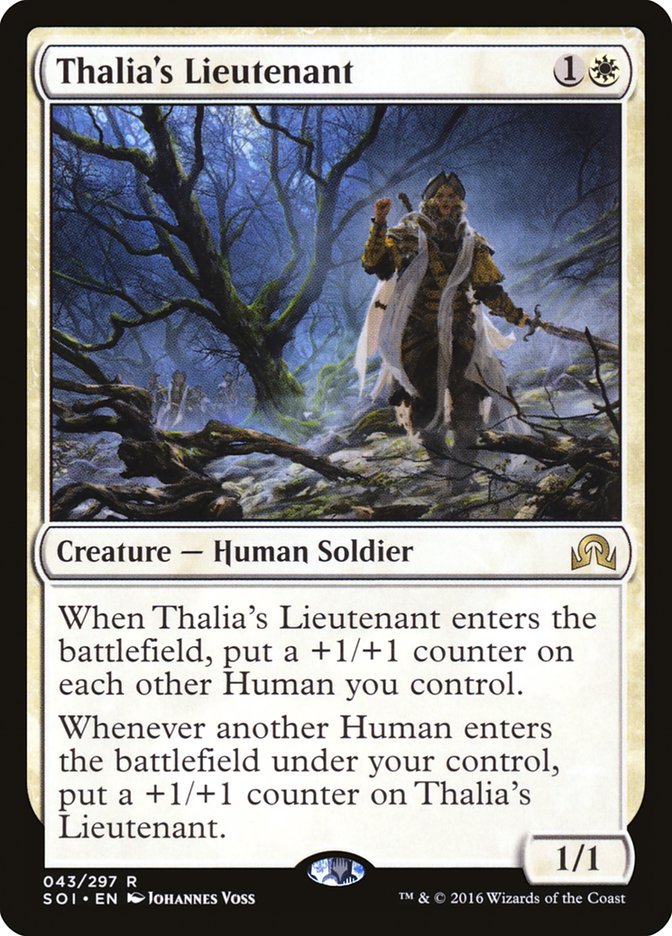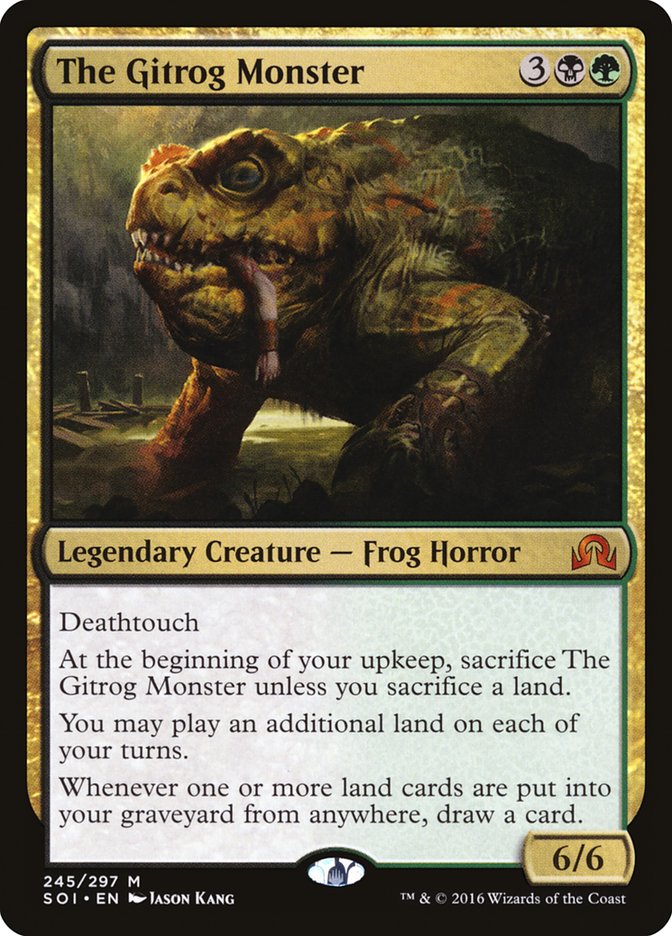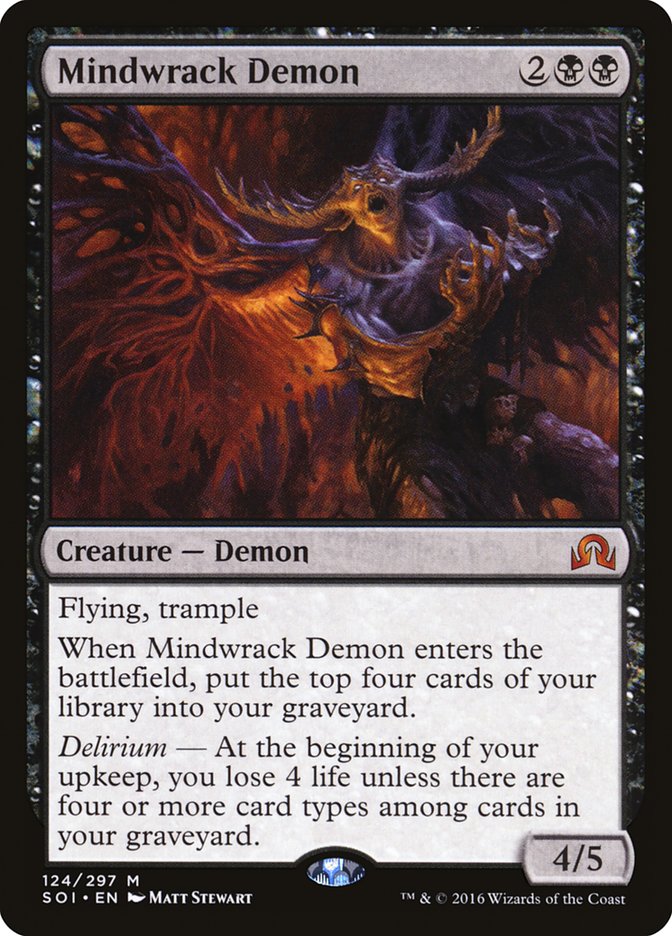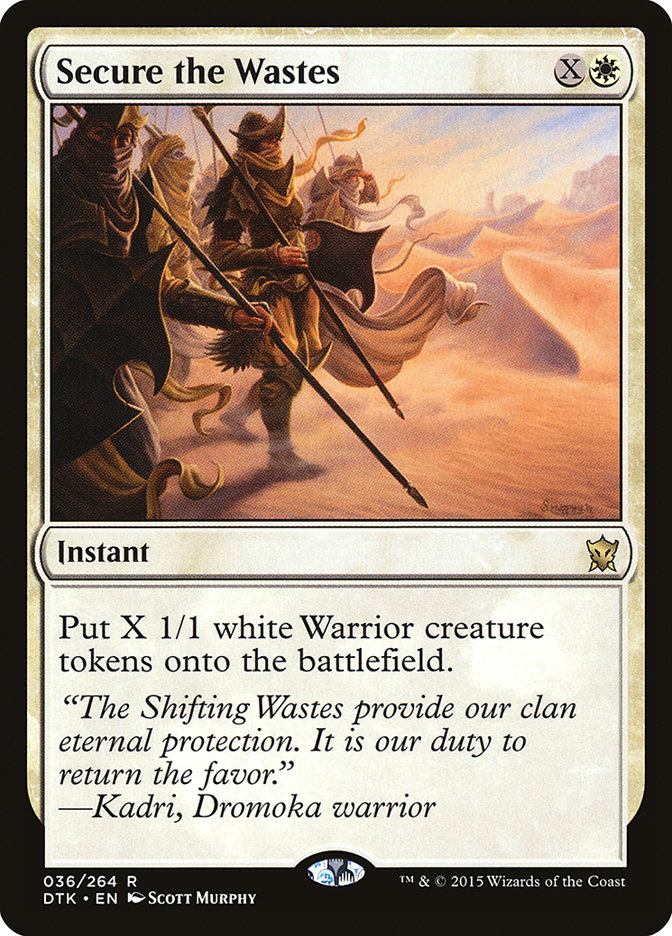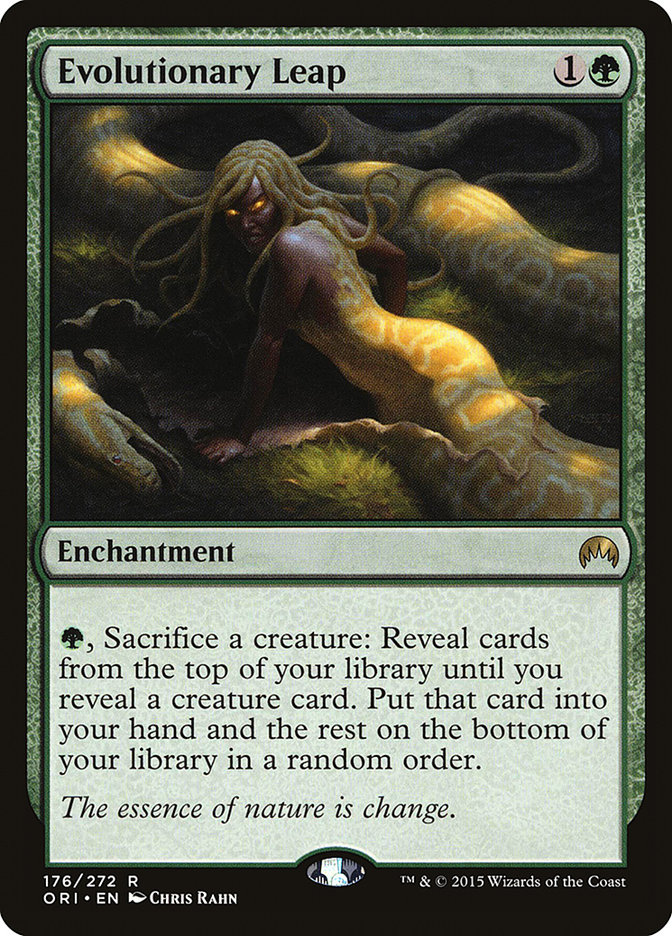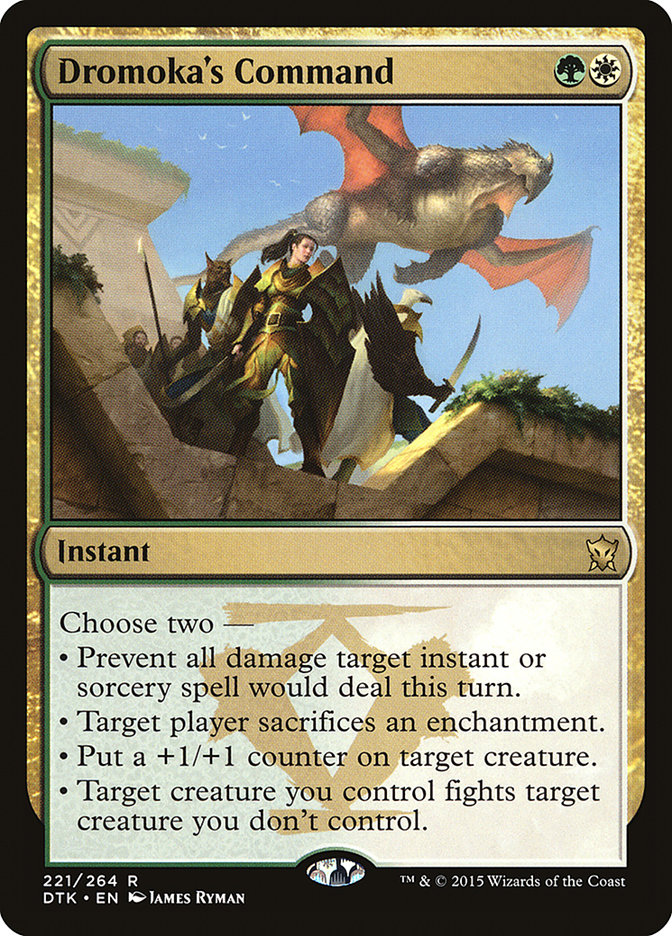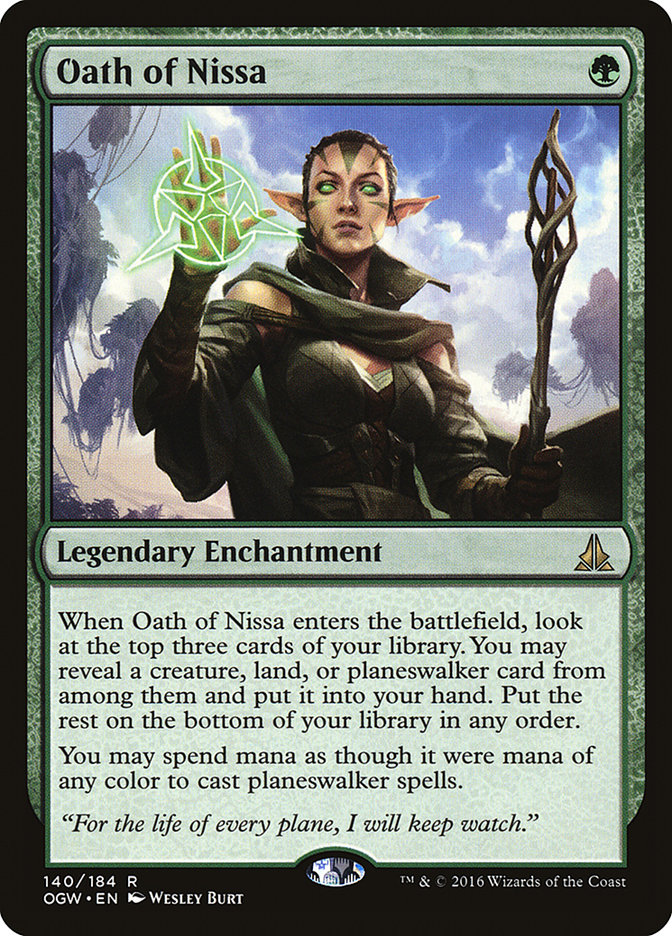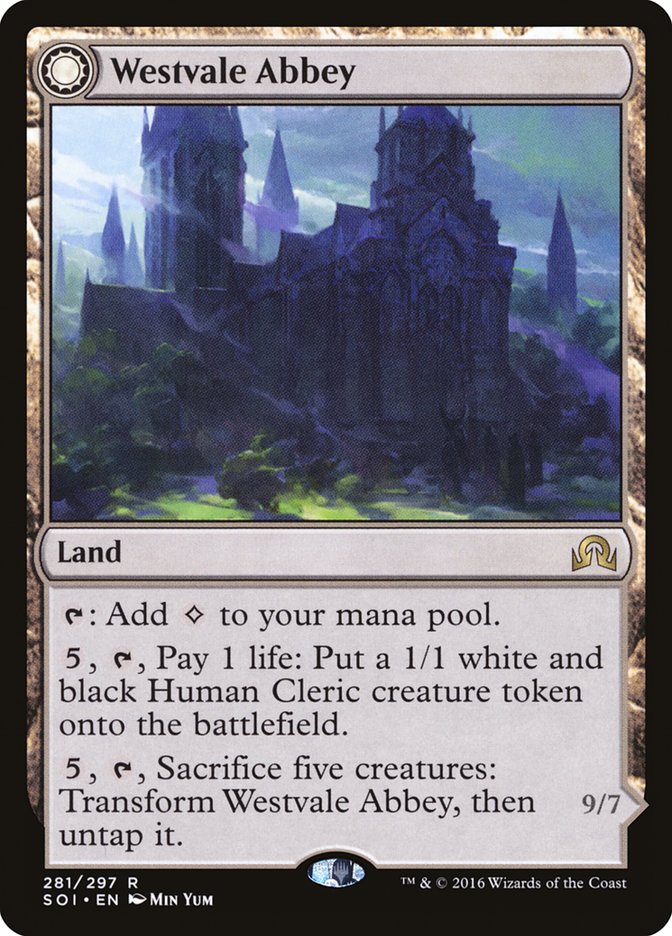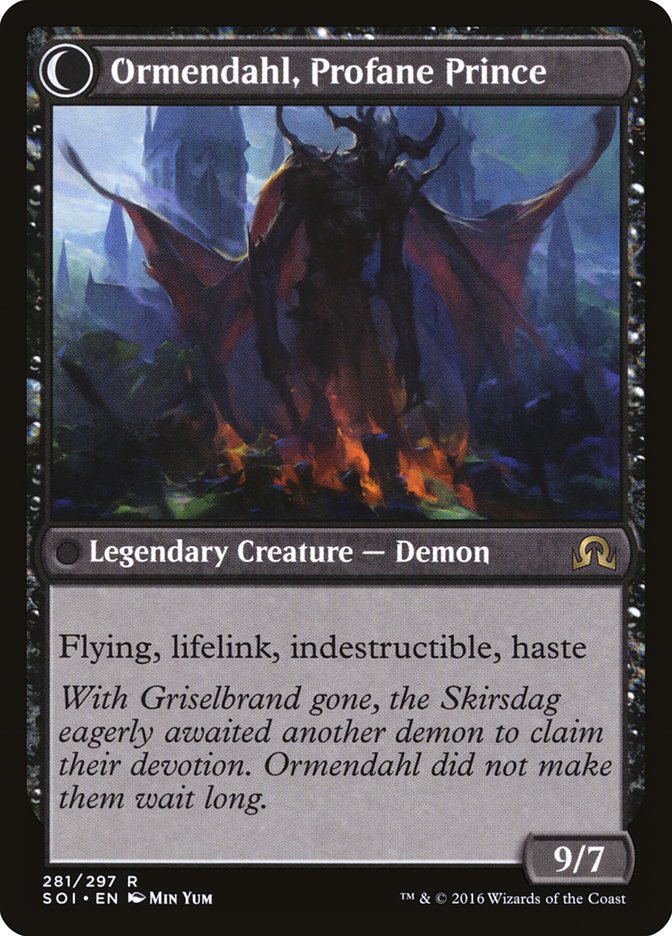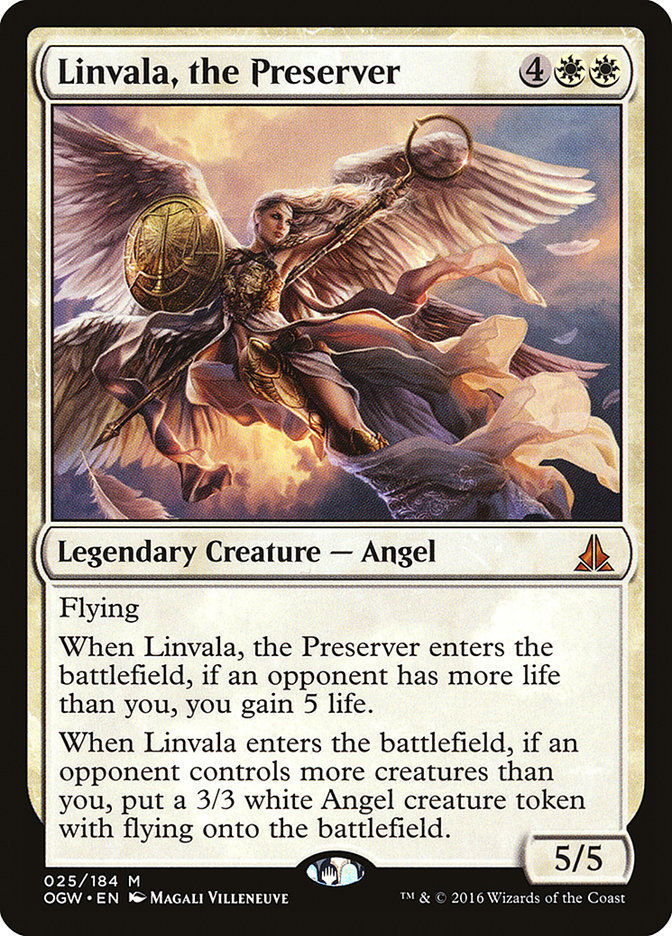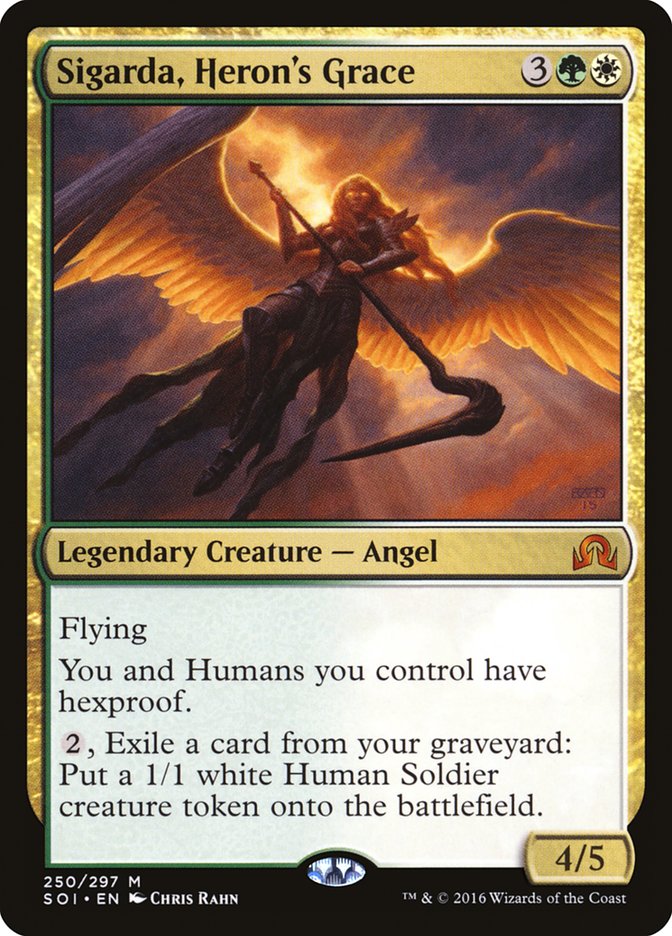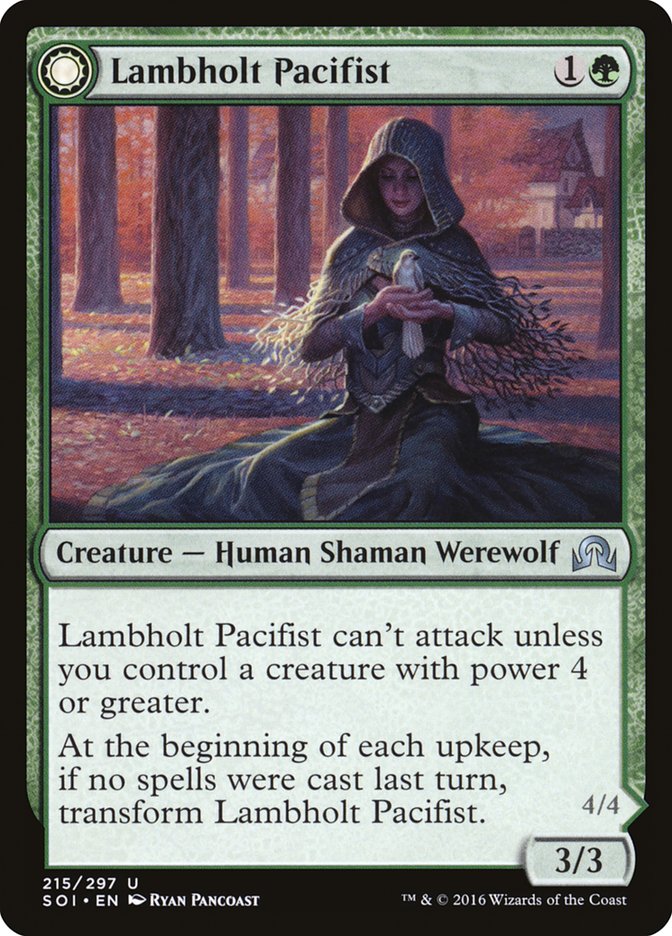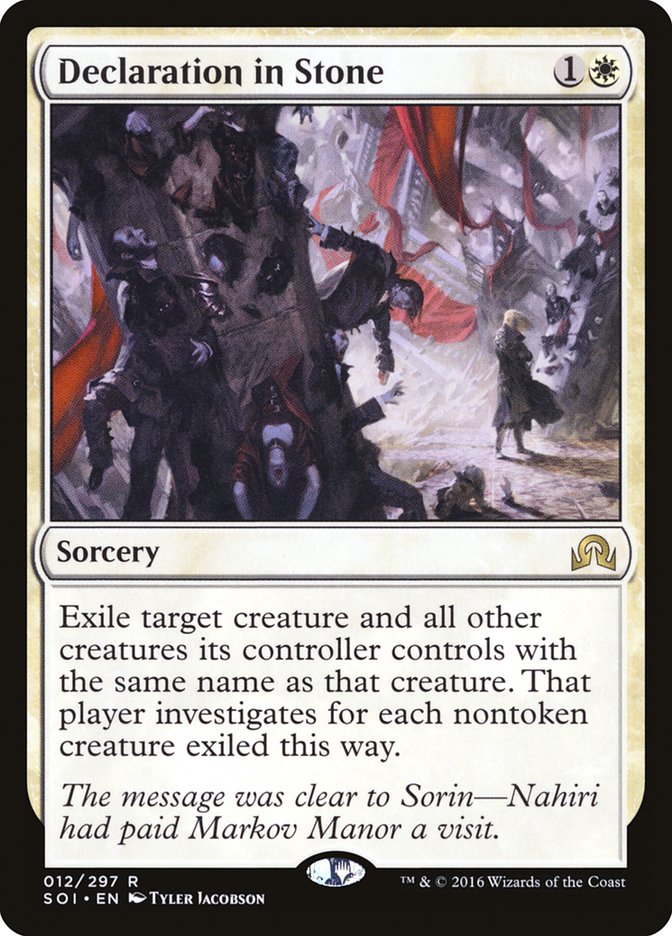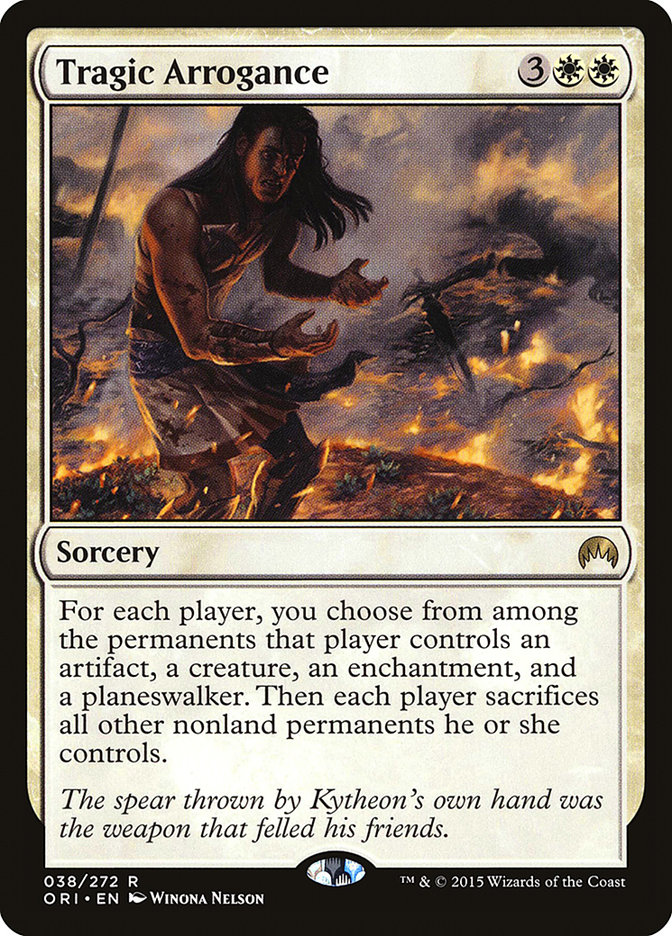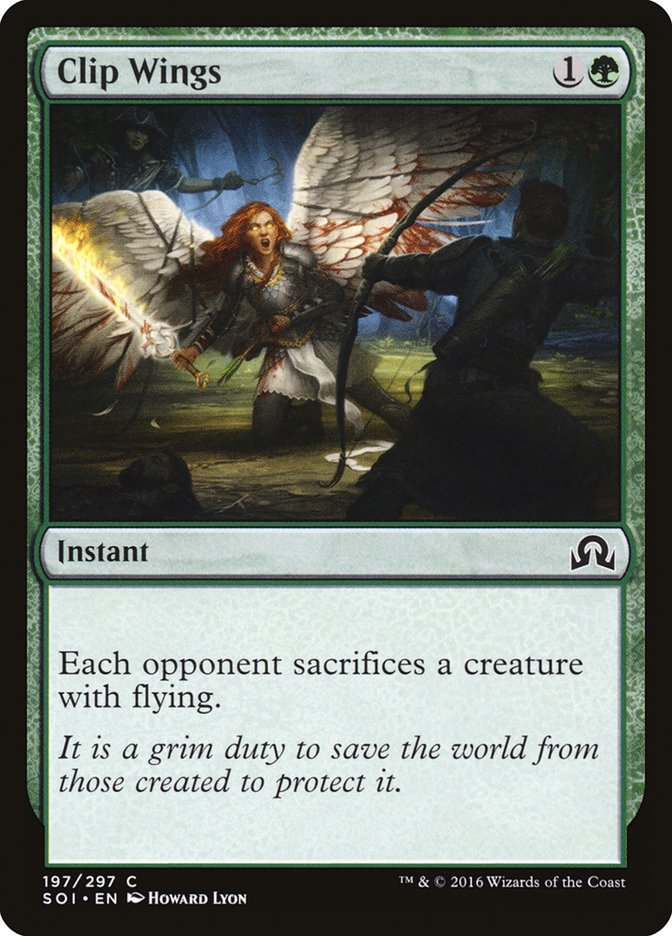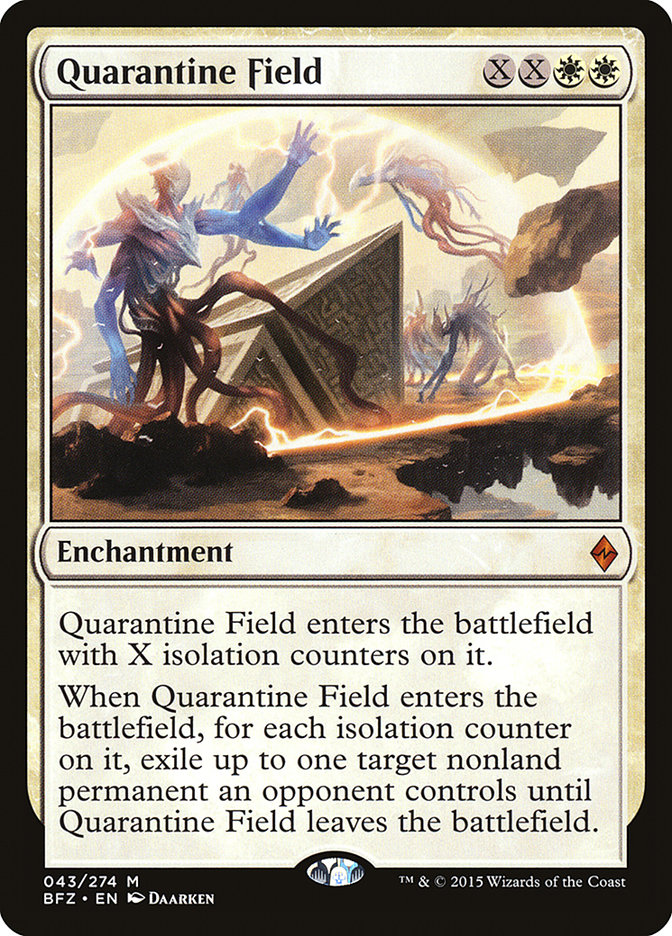 Face to Face was ready to call it quits and choose from the default most powerful decks of the format: Bant Company and Humans. Results from the #SCGINVI were pretty clear: these two decks were a force to be reckoned with, and if you couldn’t beat them, it was time to join them.
Face to Face was ready to call it quits and choose from the default most powerful decks of the format: Bant Company and Humans. Results from the #SCGINVI were pretty clear: these two decks were a force to be reckoned with, and if you couldn’t beat them, it was time to join them.
What was the problem?
Unfortunately, there’s only so much you can do in deckbuilding when a deck as powerful as Bant Company is as popular as it is. Flashy mythic rares such as The Gitrog Monster and Mindwrack Demon line up incredibly poorly against Reflector Mage, especially if it can be put onto the battlefield at instant speed.
This really warps what cards and strategies we can use building decks. I was initially really interested in trying midrange decks, similar to the W/B planeswalker decks that have been somewhat popular. Unfortunately, these decks lined up pretty poorly with Bant Company regardless of what we tried. Multiple instant-speed threats that generate advantage when they enter the battlefield create an issue for decks aiming to play a one-for-one game. With Bant Company being such a popular deck, it would likely be a big mistake to show up to the tournament with a deck that had a poor matchup with it.
What changed?
Well, after trying what felt like everything and failing, we decided to go back to a deck Jacob Wilson was having some early success with in testing. G/W Tokens got pushed aside early while other brews were being created and tested. G/W Tokens’s main flaw at the time was it was weak to the fast white Humans decks which we figured would be a major player in the metagame at the Pro Tour.
It became apparent that fixing the Humans matchup was going to be much easier than fixing the Bant Company matchup, and G/W Tokens seemed to be favored against Bant. A similar deck managed to place itself into the Top 8 of the #SCGINVI, so we took another look and gave the deck another try.
I’ve always been of the belief that beating streamlined decks such as Humans is quite easy to accomplish if you try, so we worked on improving that matchup and decided to devote our last two days of testing to this G/W Tokens deck, knowing that a few teammates had already tuned versions of W/U Humans and Bant Company, so we had some default choices if it didn’t work out.
It became apparent pretty quickly that the G/W Tokens deck was doing the exact things we wanted to be doing, using Archangel Avacyn to extreme effect.
G/W Tokens can play as a typical tokens deck, flooding the battlefield early with cheap creatures and tokens generated by planeswalkers, while also having the element of a control deck with Archangel Avacyn flipping and creating all sorts of problems for both Bant Company and Humans. A deck as flexible as this can be difficult to attack, especially when it’s a relatively unknown quantity in the metagame. Other than testing the deck ourselves, we didn’t really devote any time to testing other brews against this deck, and we assumed other teams would be in the same boat. Showing up to a Pro Tour with a deck people haven’t devised specific plans for is a huge advantage which shouldn’t be overlooked.
Creatures (16)
Planeswalkers (8)
Lands (25)
Spells (11)

What made this deck so powerful?
The ability to play two planeswalkers that can generate a token each per turn, Gideon, Ally of Zendikar and Nissa, Voice of Zendikar, allows you to really lock up the ground against decks attacking with creatures. This allows you to slowly take over the game with incremental advantages and eventually win with a slew of tokens, an Archangel Avacyn, a Secure the Wastes pumped by Nissa or Gideon, or a flipped Westvale Abbey.
These planeswalkers are also nightmares for controlling decks, generating a massive battlefield presence on their own and then pumping our tokens with a Gideon emblem or Nissa minus. The G/W Tokens deck also has an incredible ability to play at instant speed once you get to five mana. It is often correct in the middle of the game to simply hold up your mana, threatening an Archangel Avacyn or Secure the Wastes while also being able to cast Stasis Snare or Dromoka’s Command. One of the major reasons this deck was intriguing to me was the interaction between Hangarback Walker and Archangel Avacyn.
A typical game against Bant Company might involve the Bant player casting a main-phase Collected Company to look for Reflector Mage or Bounding Krasis to tap or bounce a creature so the Bant player has the opportunity to attack our planeswalkers. This leaves the G/W Tokens player free to cast a main-phase Archangel Avacyn and then cast a Hangarback Walker for zero, triggering the flip on Archangel Avacyn during the opponent’s upkeep and sweeping their battlefield.
Evolutionary Leap also gives us the ability to flip Archangel Avacyn on demand while also searching for more copies of Archangel Avacyn or Hangarback Walker to restart the process. Dromoka’s Command also provides us with the ability to flip Archangel Avacyn easily, while also dealing with opposing enchantments and allowing us to swing our Archangel Avacyn into an opponent’s Avacyn and fighting it with the trigger on the stack. All of these factors make the G/W Tokens deck the best Archangel Avacyn deck, which is right where I want to be.
What would I change moving forward?
Admittedly, this deck and sideboard were slightly rushed. We had very little time to tune this deck to exactly where it may have been, given the proper amount of time. That said I really like where we ended up and wouldn’t change all that much.
The first thing I would do to the maindeck is add a fourth Oath of Nissa.
Oath of Nissa really helps the deck’s consistency. Oath of Nissa finds both lands and threats when necessary and allows us to cast our planeswalkers on-curve regardless of our colors available.
I would likely remove a copy of Thraben Inspector to make this change. Thraben Inspector in my eyes was the weakest card in the deck. That said, it was necessary to have cheap creatures with decent toughness to work with Dromoka’s Command. Thraben Inspector allows us to cast a turn 2 Dromoka’s Command to kill a Jace, Vryn’s Prodigy or Consul’s Lieutentant. For that reason I wouldn’t completely remove Thraben Inspector from the deck.
One change that some of the team made was adding a couple of copies of Lambholt Pacifist to the maindeck instead of Thraben Inspector. Lambholt Pacifist plays quite nicely with Dromoka’s Command; Gideon, Ally of Zendikar; and Nissa, Voice of Zendikar. These cards all turn our Pacifist into a warmonger.
Another change I’m pretty confident is correct is trimming a Westvale Abbey for another Forest. The mana in this deck is its biggest weakness. It plays double-colored spells of both white and green, which can lead to mana issues here and there. I prefer an additional Forest to allow me to cast early Oath of Nissa to smooth out my draws, as it’s extremely important to play planeswalkers on-curve to get ahead of the opponent on the battlefield.
The Sideboard
The sideboard was perfectly reasonable, but I think can be improved. Let’s look at each individual sideboard card and what their applications are, so we can figure out what we can take out.
Linvala was an excellent top-end card to bring in against both Humans and Bant Company. After we cast Tragic Arrogance against a Humans deck or Bant Company, they will usually deploy their remaining threats or follow up with a Collected Company. Linvala, the Preserver in these spots will usually grant us five additional life and potentially an Angel token, creating a nice way to turn the corner. I would recommend keeping this card.
This card is deceptively difficult to kill as it dodges a ton of removal in Standard, being a five-toughness gold creature with flying. I found this card to be lackluster during the tournament but teammates told me it was solid for them. Personally, I would remove this from the sideboard but could also see testing it more against B/G Seasons Past decks to see if it pulls its weight or if it’s just dead weight.
This was one of the last cards we decided to include in our sideboard. Some of the team even added it to the maindeck instead, which could potentially be correct. Lambholt Pacifist gives us a large cheap blocker against Bant Company and Humans. This is important for protecting our planeswalkers and giving us a large enough creature to use Dromoka’s Commnd effectively.
This is kind of a low-powered sideboard card, so it’s possible this card either wants to be in the maindeck instead of any Thraben Inspectors, or not in the deck at all.
Evolutionary Leap was simply incredible. The second copy in the sideboard shouldn’t go anywhere, and in fact maybe it should be built around more. In one round against a teammate, I decided that the matchup was all about the planeswalkers and Archangel Avacyn, so I decided to cut all of my Sylvan Advocates and Thraben Inspectors and sideboard in the second Evolutionary Leap so that I could repeatedly sacrifice tokens to find Archangel Avacyns and Hangarback Walkers, allowing me to flip Archangel Avacyn extremely often. I think this is a very real sideboard plan that can be explored more as the metagame shakes out.
This is in the sideboard to give us the option to sideboard into a control deck as well as to kill very specific threats such as World Breaker, Hangarback Walker, and opposing swarms of tokens. I really liked having three in the sideboard and think it’s the correct number.
I think having three of this card in the sideboard could have been excessive. We don’t want to sideboard in the full three against Bant Company, because sometimes it just does nothing in the face of a savvy player who can set up a properly timed Collected Company. We did, however, bring in two most of the time. The third copy is mostly for Humans decks, but I could also see it being very strong against B/G Aristocrats, so it’s possible we should just stay at three copies.
Dragonlord Ojutai was a difficult card for us to deal with, and it gets even harder when Always Watching is on the battlefield. This came up many times testing against U/W Humans in sideboard games and was one of the ways we’d lose those. Esper Dragons also showing up as a contender in testing led us to want outs to them slamming a turn 5 Dragonlord Ojutai. Clip Wings would also come in against various Archangel Avacyn decks.
We discussed various options as removal spells for Pyromancer’s Goggles. The U/R Goggles deck was actually quite frustrating to play against. Both Pyromancer’s Goggles and Thing in the Ice were quite difficult to beat. Quarantine Field being able to deal with both of the problem cards made it a no-brainer if we wanted a card specifically for that matchup. There happened to be some nice overlap, as it is quite a good card against other decks with planeswalkers.
That said, if the Goggles Ramp deck Brad Nelson piloted to a Top 8 finish becomes the more popular Pyromancer’s Goggles deck, this card isn’t particularly good there because of the presence of World Breaker. Conclave Naturalist might be a decent option in this matchup, as it doesn’t die to Fiery Impulse and can be found with Evolutionary Leap.
Secure the Wastes is incredibly good in this deck. We originally had three maindeck and I’m considering moving back in that direction. If I played this deck this upcoming weekend, I would add a fourth to the sideboard in the place of Sigarda, Heron’s Grace. I think it’s just better at attacking the midrange and control decks than Sigarda was.
I would add to the sideboard one or two copies of Hallowed Moonlight. As I said before, Bant Company tends to play their Collected Companies main-phase against us after we tap out for a Gideon, Ally of Zendikar, so it can be a bit difficult to “counter” their first Collected Company with Hallowed Moonlight, but the rest of the time, you can likely find a window to cast Hallowed Moonlight. B/G Aristocrats seemed like a powerful deck that may potentially be a bad matchup, so adding a way to slow down their progress is likely helpful. Also, I think mirror matches might come down to big end-step Secure the Wastes casts, and Hallowed Moonlight is an excellent way to counteract this plan.
Success!
G/W Tokens was probably the best deck I’ve ever played at a Pro Tour. If not the best, it was certainly one of the most fun and interesting. This is coming from someone who in the previous Pro Tour played Colorless Eldrazi. Our team’s win percentage with specifically this deck was 70%, which is simply incredible at the Pro Tour level.
I can’t express enough how proud I am to be part of Team Face to Face and I am honored that a teammate finally managed to take home the trophy. We’ve come so close so many times and come up just short. I am especially proud of Steve Rubin, who is one of the hardest-working individuals I’ve had the pleasure of testing with. He not only won the tournament but was a major contributor in the development of the G/W Tokens deck.
I think G/W Tokens will be a major player in Standard from here on out, and I highly recommend you try it.


